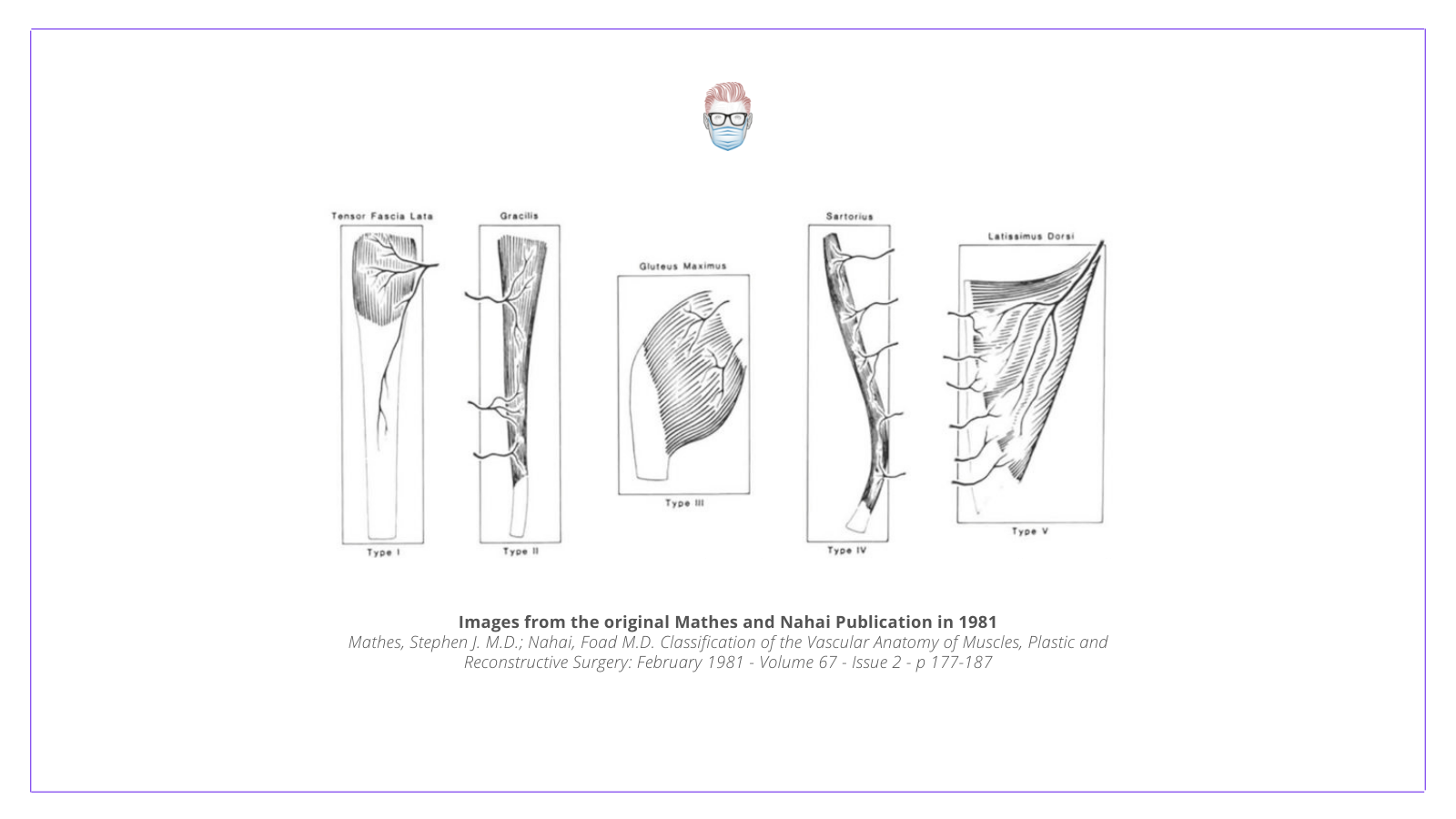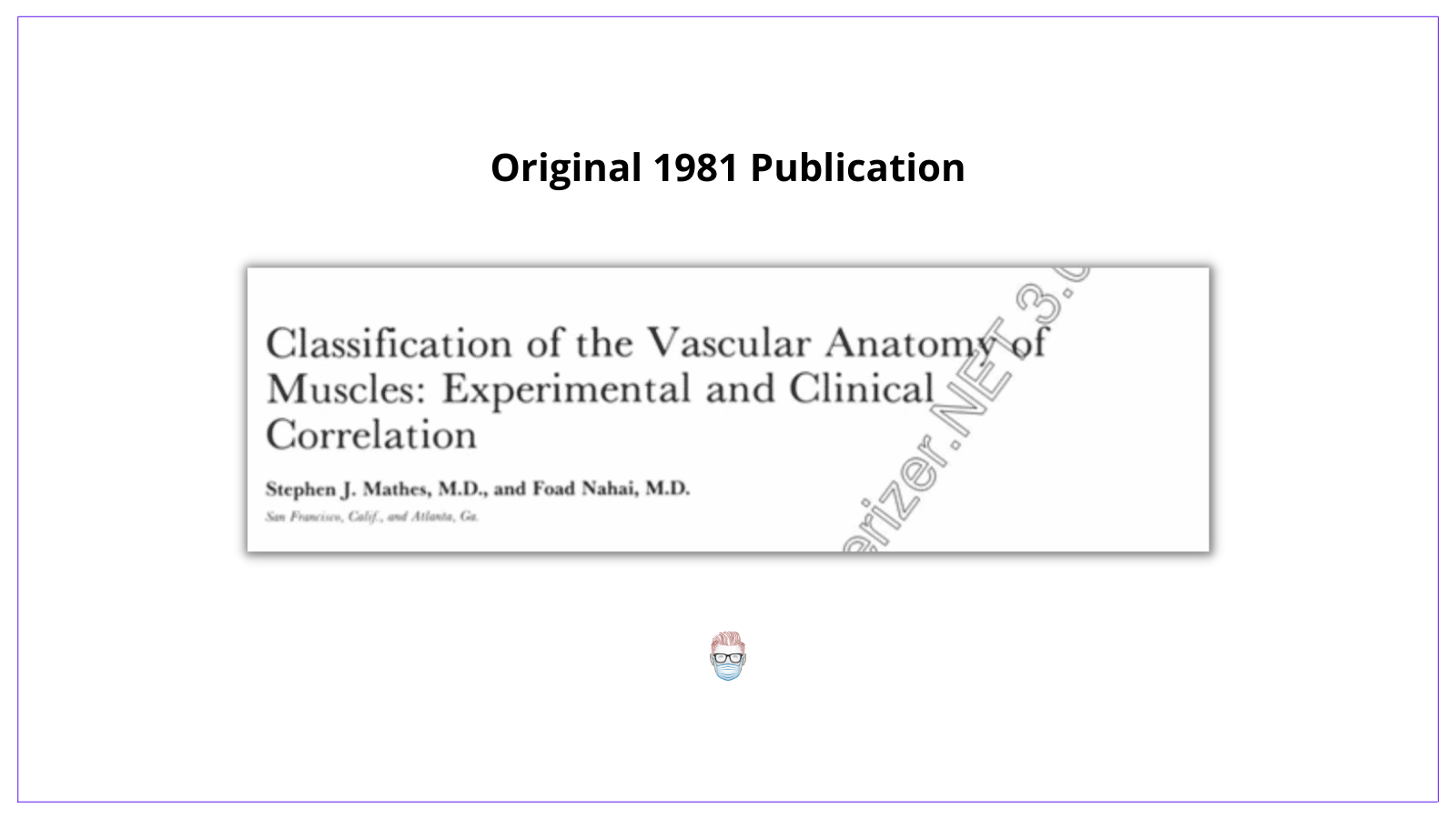Origin of Mathes and Nahai Classification
The Mathes and Nahai Classification system was first described in 1981 as a way of describing the blood supply to muscle and musculocutaneous flaps. It was first described by Mathes and Nahai in a 1981 PRS publication.

There are some important points for context:
- There is no commonly used alternative classification for muscle flaps
- It does not relate to local flaps, such as rotation or rhomboid flaps, only muscle.
- It is different to Mathe and Nahai's fasciocutaneous flap classification.
- Blood supply to muscles and musculocutaneous flaps can be read here.

Mathes and Nahai Classification
The Mathes and Nahai classification for muscle flaps can be visualised in the image below.

Key points on the Mathes and Nahai classification system are:
- Type 1: 1 major pedicle (gastrocnemius)
- Type 2: 1 major and 1 minor pedicle (Gracilis Flap)
- Type 3: 2 major pedicles (rectus abdominis)
- Type 4: Minor segmental pedicles (sartorius)
- Type 5: 1 major and minor segmental pedicles (latissimus dorsi flap)
These points are illustrated in the diagram below.

Mathes and Nahai Mnemonic
Mnemonic for Mathes and Nahai Classification is as follows: Ten Graceful Glutes Sat on Latrines.
- Type I: TFL Flap
- Type II: Gracilis Flap
- Type III: Gluteus maximus Flap, VRAM Flap
- Type IV: Sartorius Flap
- Type V: Lattisimus dorsi flap
Another mnemonic for Muscles flaps is: "Get Good Remembering Supply Lines" · -
- Type 1: Gastrocnemius
- Type 2: Gracilis
- Type 3: Rectus Abdominis
- Type 4: Sartorius
- Type 5: Latissumus dorsi
Flashcards
This is for thePlasticsPro
Join the Club to enjoy unlimited access to all of thePlasticsFella.
Join the Club

